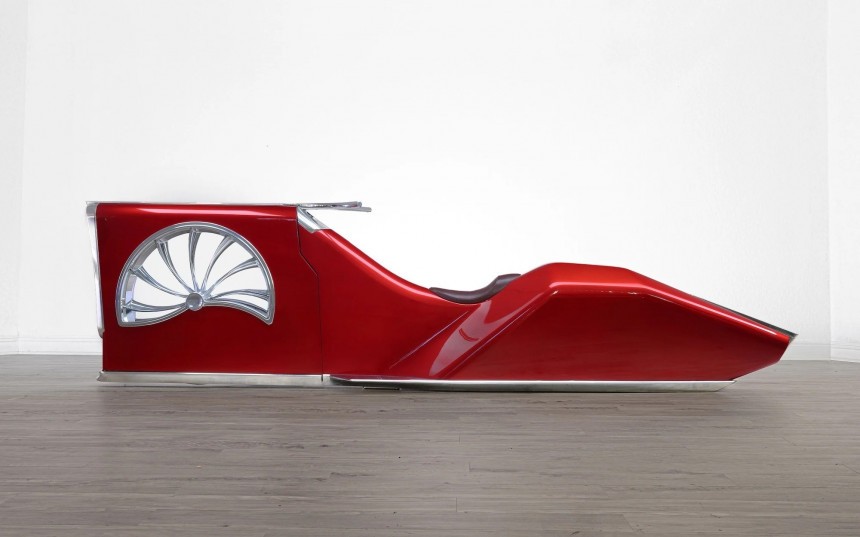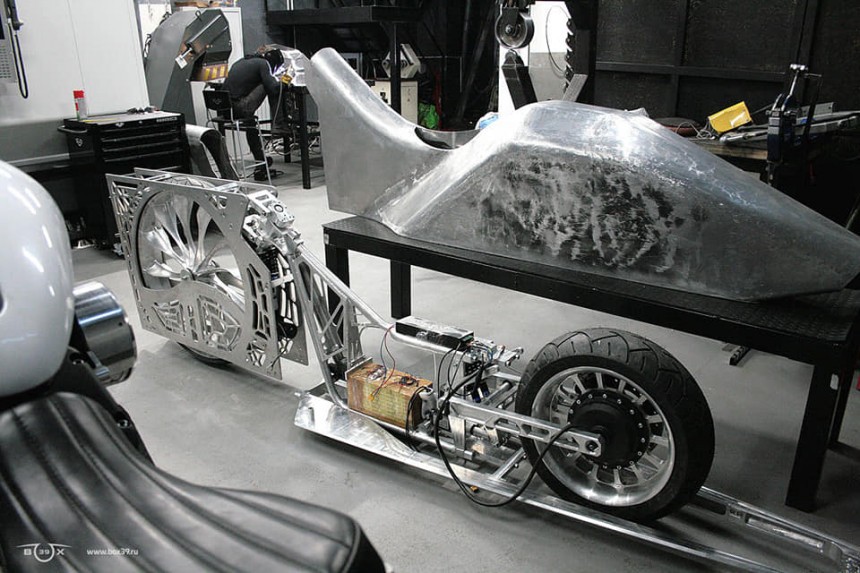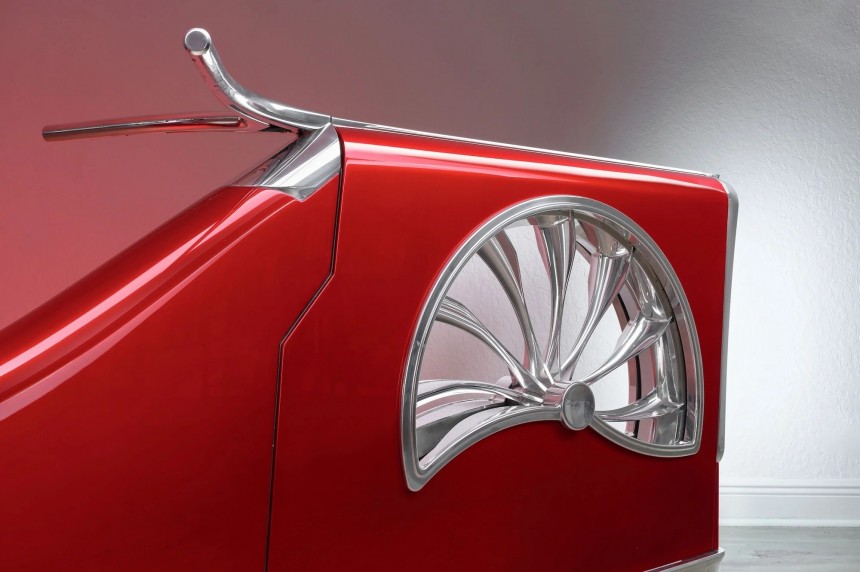
Today’s electric motorcycles are all about instant torque, battery lifespan, and mile range, but none of these aspects represented a priority for Vlad Belyakov when he designed the strikingly unusual Guido electric motorcycle concept.
It is the only one of its kind, and its meticulously handcrafted all-aluminum body, along with its massive front wheel that is said to have taken about 200 machine hours to manufacture, is proof of the painstaking attention to detail the designer put into his work.
Vlad Belyakov is the founder of Box39, a professional custom motorcycle workshop in Moscow, Russia, and he has built an international reputation for creating stunning motorcycle designs using advanced Haas UMC-1000 five-axis milling machines. The Guido has been created via a Haas CNC milling machine as well, and with its quirky design, eye-catching color, and beautiful finish, it might be the most outlandish model the passionate craftsman and his team have produced.
This unusual electric motorcycle was first unveiled in 2020 and was developed and built on a commission from a Haas machinery dealer in eastern Europe for the purpose of showcasing what the modern milling machinery from the American manufacturer can actually do when used to its full capabilities. Though it was supposed to go to the aforementioned Haas importer, after completion, the bike ended up spending a few years in Florida, in a showroom promoting Box39 products in the USA. After that, the Guido exchanged hands a couple of times and is now listed for sale again.
Described as a sculpture that you can ride, the Guido custom electric motorcycle stands at the crossroads of art and engineering. It is an electric two-wheeler powered by a rear-mounted motor and a lithium-ion battery system, and though it looks more like a work of art with its sleek lines and smooth, shiny surfaces, it is 100% functional. Considering it was not built with performance in mind, no details about its power, acceleration, or top speed figures were made public.
When looking at it, many might wonder how it rolls, which is the front and which is the back of the bike, or better yet, how you steer it. The half-exposed aluminum wheel indicates the front of the bike and measures no less than 30 inches (76.2 cm) in diameter. It rotates like a paddle wheel inside the bike’s body, with a tolerance between the wheel and the bodywork of about an eighth of an inch.
This is most likely the most complex component of the motorcycle. Built from a single block of aluminum, it took the team no less than 200 hours of machining time to achieve its elaborate design.
The bike’s intricate aluminum alloy frame is completely concealed beneath the handcrafted aluminum body, which too was a complex part to build and is said to have taken four months to complete. The 17-inch rear wheel remains completely out of sight, neatly tucked underneath the bodywork.
As mentioned, the Guido is fully functional, so an electric powertrain is also present underneath its sleek body and is capable of moving under its own power. It also features custom Girder front end suspension, electronic rear suspension, and hydraulic reak brakes. Though hard to believe judging by the unusual shape of the front fender, it can also steer, but its range of steering motion is obviously limited.
Those lucky enough to ride this one-off bike hop on a small padded seat that is removable and offers access to the electrical system. Given the bike has no gearbox, there are no foot controls and the single rear disc brake is controlled via the handlebars.
Other features include an oversized oval-shaped LED headlight and a strip of LED lights on the rear fender serving as the brake/running light.
The Guido electric motorcycle prototype is scheduled to cross the auction block in early March with a price guide of US $90,000 – $150,000 and would make a wonderful addition to any bike collection. It’s important to note that the Guido is not road legal. It was built as a concept of design with the aim of showcasing both what modern Haas 5-axis milling machines can do and the capabilities of the talented team at Box39, so whoever ends up buying it will surely appreciate it more as a functional sculpture than a rideable motorcycle.
For those interested how this bike was made, the team at Box39 documented the process on their YouTube channel.














